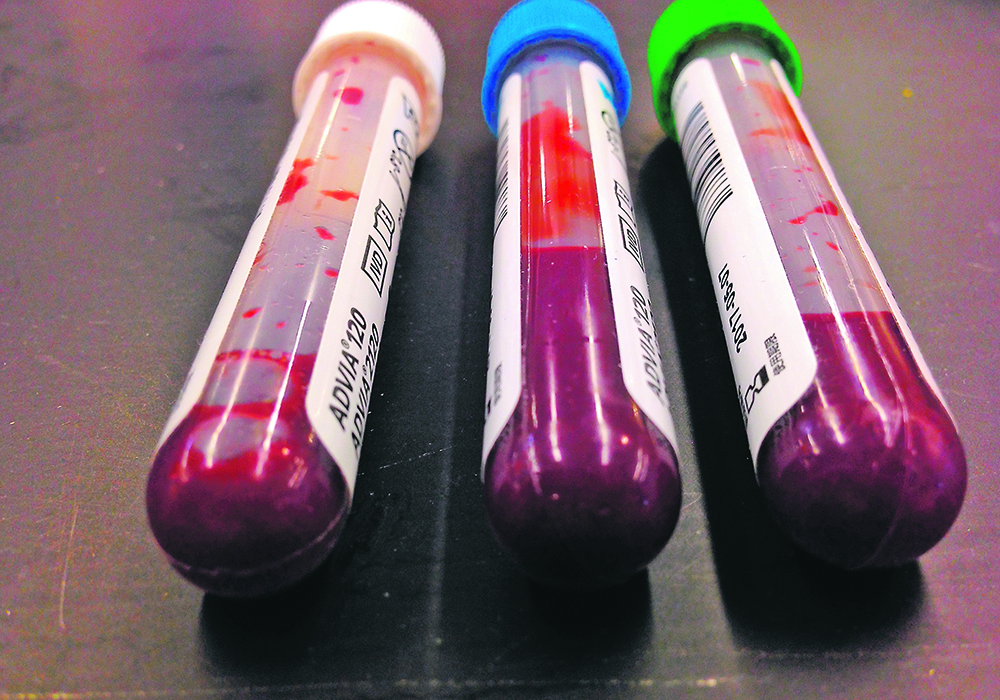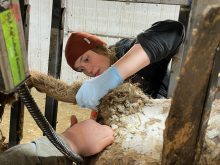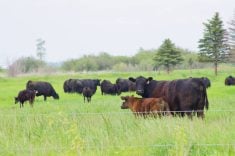All bleeding eventually stops. However, the rate at which blood clots is critical to animal health.
Generally, most cells in the body are no further than one millimetre from a blood vessel. This proximity allows the spread of oxygen and nutrients to cells and removal of carbon dioxide and other waste products.
The heart pumps blood around the body through an intricate network of blood vessels that taper down into smaller and smaller bore arteries until they become microscopic capillaries with thin walls that allow diffusion across their membranes.
Read Also

Manitoba extends Crown land rent freeze
Manitoba government links the continued rental rate freeze on grazing and forage leases to economic and environmental challenges facing the industry
Then these converge into larger and larger veins before entering the heart once again.
Blood has several components. Red blood cells are small, disk-like cells that lack DNA and carry out the vital function of carrying oxygen in their hemoglobin molecules. It is the iron-containing hemoglobin molecules that give blood its scarlet colour.
There are also fewer but critically important white blood cells that are an essential component of the immune system.
Finally, small cellular fragments known as platelets form the basis of blood clots. All these are contained in a fluid known as plasma.
Proper clotting of blood requires a complex series of chemical reactions, ultimately creating a jelly-like clot in the damaged blood vessel. Platelets, those free-floating cell fragments, provide a framework for the important reactions to occur.
Damage to blood vessels and bleeding issues can arise from a number of disease conditions in animals.
For instance, some of the most commonly used medications in veterinary medicine are non-steroidal anti-inflammatory drugs (also known by their acronym, NSAIDs). Horses, dogs and cats are commonly given this type of medication to treat chronic pain associated with arthritis and other conditions.
One of the main risks that comes with long-term use of these medications is the formation of stomach ulcers that can bleed and cause pain.
Pigs and cattle can get bleeding stomach ulcers as well, although the cause is usually not related to medication. In these cases, if the ulcer damages a major blood vessel, the animal can bleed to death.
No matter what species, bleeding into the brain can be especially dangerous.
The bone of the skull offers good protection for the soft, delicate brain tissues, but it cannot expand to accommodate the extra fluid that occurs with an acute brain bleed. Rapidly increasing pressure in the skull can lead to brain damage and death.
Similarly, bleeding into the sac that surrounds the heart prevents it from contracting and pumping adequately and can be quickly fatal. Rupture of heart tumours is one cause of this type of bleeding.
Sometimes bleeding occurs from direct blood vessel damage. This is the obvious case with trauma that leads to hemorrhage.
A strange example of blood vessel damage leading to hemorrhage is the disease known as guttural pouch mycosis in horses. This is a fungal infection of the major blood vessels to the brain that course through a structure called the guttural pouches — large, paired, air-filled out-pouching of the eustachian tubes, which connect the mouth to the ears.
The fungus Aspergillus can grow inside the guttural pouches and invade into these carotid arteries, which are large bore blood vessels. If the damage is severe, a sudden fatal hemorrhage can occur.
More generally, systemic infections can lead to a condition known as septicemia.
In the course of severe inflammation to deal with the pathogen, the body undergoes a dangerous shift into blood-clot forming mode. The molecules needed for blood clotting are rapidly used up so there is a shift from clot formation initially to widespread bleeding. These are often tiny bleeds, leading to pinpoint red spots on mucous membranes such as the gums.
Some toxins create bleeding. Dogs are especially prone to eating things they shouldn’t, including rodent poison. Many of these work by impairing blood-clotting factors that require vitamin K.
Affected dogs can bleed from anywhere, but most typically from the nose, into the stomach and guts, as well as into the chest, abdomen and joints.
Cattle fed mouldy sweet clover can also develop bleeding disorders through similar toxic effects on the clotting factors that require vitamin K.
There are also rare genetic disorders among animals that can lead to bleeding. Mutations in genes that code for clotting factors and platelets can be inherited, which means they are most likely to arise in purebred animals. We see genetic clotting disorders most often in purebred dogs and cattle. Often, they only become apparent after the animal undergoes surgery such as neutering.
The body must maintain a careful balance between clotting and preventing clots. If there is a failure of the clotting mechanisms or severe damage, bleeding is the result.
On the flip side, if blood clots too easily, thrombosis (pathological blood clots) can form with disastrous results. It is amazing how a body maintains this delicate balance.















